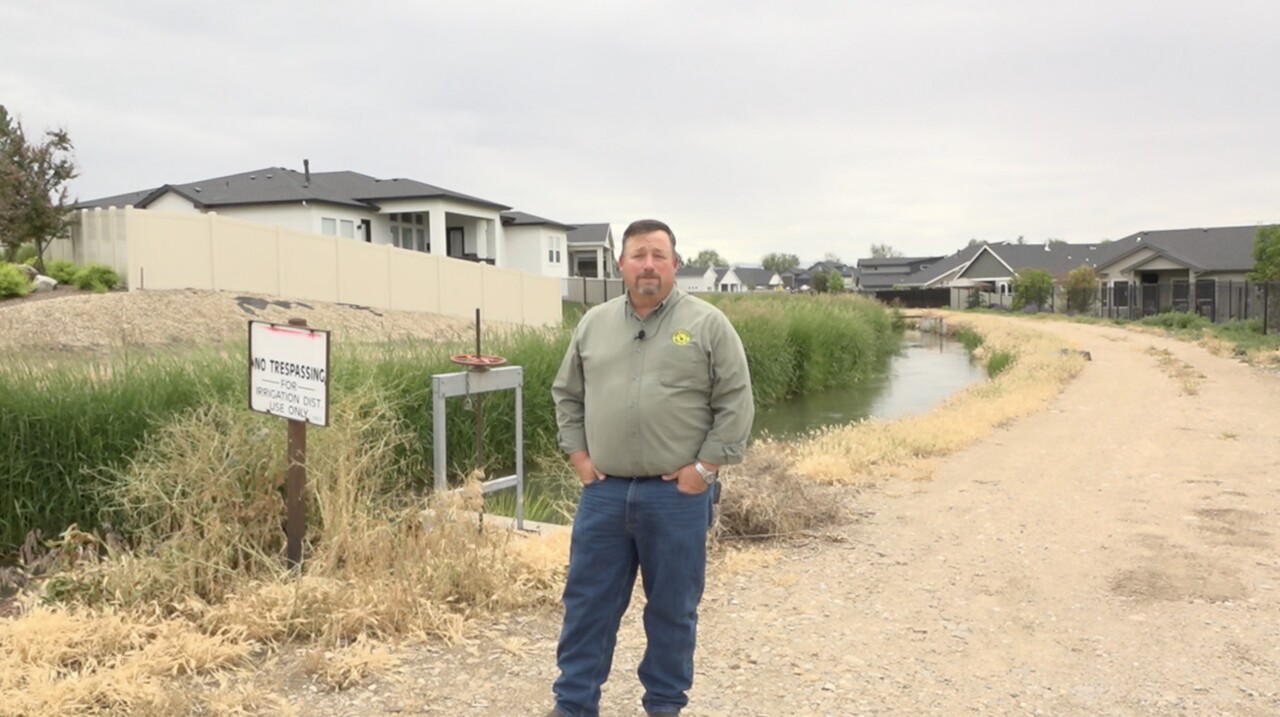NEW PLYMOUTH — Hundreds of years ago, southern Idaho looked like a desert ecosystem.
Sagebrush, cheatgrass and dry soil exist here naturally, but today it doesn't quite look like that anymore. In New Plymouth, and lots of areas in the Treasure Valley and all over southern Idaho, hundreds of miles of canals help turn the environment into farmland.
“I'm fourth generation. We're farming some of the same ground that my ancestors pulled out of sagebrush to put into production many many years ago," Galen Lee, of Sunnyside Farm, said.

Lee is part of a long line of people working the land since the 1800s. His family footsteps and hard work are woven into the area’s agricultural history.
Today, Lee's crops include sugar beet, peppermint, corn, alfalfa, and asparagus - there's cattle around too.

None of that farm acreage would be possible without the irrigation canals that ribbon the land.
“We have about 1,250 acres that we own," Lee said, "if it weren't for the canals, we would not have any crop ground here."
Idaho’s farming industry "sprouts" every year with the help of soil, sun, and water transported from both reservoirs and rivers in the area through the canal system. Sunnyside Farm gets its moisture via water rights that come from the Snake River and the Black Canyon Reservoir.

“There's probably 50 different crops we can raise here because of our climate. Part of that's because of the dry climate and a big part of that's because of the water, the availability of water," Lee said.
This year that availability of water came into question.
“It was extremely scary this spring. There's no doubt about that," Lee said.
Related: Idaho counties experience drought conditions
In April, Governor Brad Little signed an emergency drought declaration for 34 counties experiencing low water supply and below-normal snowpack.
“Our water supplies were looking really grim," Greg Curtis, Nampa and Meridian Irrigation District Superintendent, said.
Things shifted when the state received a lot of rain the past two months.
Related: Wet weather patterns help drought
“It's been a blessing, it's truly been a blessing," Curtis said, “we haven't done a complete about-face but water demand is down right now. And it's really making the outlook look a lot better."
Curits said his job of ensuring water delivery has changed over the years.
“It used to be farm fields on both sides and now it's a residential subdivision," Curtis said.

This change marks the next transformation for southern Idaho. From desert to farmland to urban housing.
“So not a lot has changed as far as the water delivery. What has changed is a number of people. Before we'd likely be dealing with one farmer or grower and now in a case like this, we probably got 3-400 homeowners who are now in our district," Curtis said.
Water rights are tied to land parcels even if ownership changes, so new homes in the Nampa/Meridian District get agricultural water for lawns and gardens.
“We're saving billions of gallons of water every year from being pumped from the aquifer by utilizing these surface waters," Curtis said.
Curtis told Idaho News 6 the surface water “isn’t ever wasted.” What’s initially let out of reservoirs through the canals is based on demand. “Whatever's left of this canal will go into Lake Lowell, and then it will be reused again and again."
Water that is used on crops seeps into the soil to replenish groundwaters and the aquifer.
Farmer and rancher Galen Lee confirmed the importance of southern Idaho's water distribution system to his way of life.
“The canals are vitally important to not only agriculture but to the whole community," Lee said.
As summer settles in and demand rises for water, one thing is clear: moisture this spring helped ease the concerns of Idaho’s billion dollar agricultural industry.
“I was relieved. I told somebody I mean, we got a lot and a lot and a lot, and I said 'it's really getting harder to be thankful for the moisture we're getting, but we need it.' I'm not going to complain about it because we really need it," Lee said.





